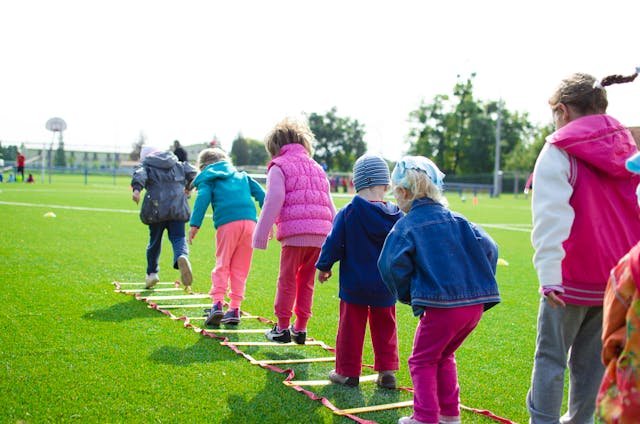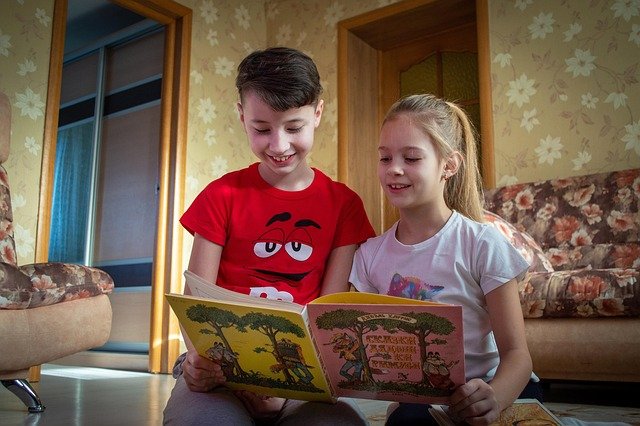Have you ever wondered why some kids seem to learn faster or think differently than others? It’s not just about how smart they are or how much they study. A big part of how children think, solve problems, and learn new things depends on something we often don’t notice — their environment. Things like where they grow up, how much money their family has, and what kind of school they go to can quietly shape the way their brain works.
At Debsie, we teach kids from all walks of life — from big cities to small towns, from different countries and cultures. And one thing we’ve seen over and over again is this: every child can shine, but their path to learning can look very different depending on what’s around them.
In this article, we’re going to explore how things like income, home life, stress, and access to learning tools affect how children think and grow. We’ll look at how the brain changes based on life experiences, and how small changes in support or environment can make a big difference. Most importantly, we’ll talk about what you can do — as a parent, teacher, or even student — to unlock the full learning power inside every child, no matter where they start.
What Are Cognitive Patterns?
Let’s begin with the basics. Cognitive patterns are the ways our brain learns, remembers, solves problems, and makes decisions. It’s like the brain’s habits — the paths it takes when doing any kind of thinking. Some kids find it easy to remember facts. Others are better at solving puzzles. These different ways of thinking come from both what’s inside us and what’s around us.
Now here’s the thing: a child’s thinking patterns aren’t just about their brain. They are also shaped by where they live, who they live with, and what they experience every day.
That’s where socioeconomic factors come in.
What Do We Mean by Socioeconomic Factors?
This sounds like a big, scary phrase, but it’s simple. “Socioeconomic” just means things that are about money, education, jobs, and living conditions. So, when we talk about socioeconomic factors, we’re asking:
- Does the child’s family have enough money for food, books, or a safe home?
- Do the parents have jobs that give them time to help with schoolwork?
- Is the school well-funded with good teachers and materials?
- Is the neighborhood noisy or peaceful? Safe or stressful?
All of these things — and more — affect how a child’s brain grows and works.
Why the Environment Around a Child Matters So Much
Imagine two children, both five years old. One grows up in a quiet, clean home with lots of books, games, and conversations. The other lives in a noisy area with fewer learning tools, and maybe not much attention from adults. Even though both kids have strong potential, their brains are being shaped in very different ways.
This is because our brains are always changing. This is called neuroplasticity — which just means the brain is like soft clay. It forms based on what it sees, hears, and feels every day. If a child sees people reading, they are more likely to enjoy reading. If a child faces constant stress, their brain starts focusing on survival instead of learning.
So, yes — a child’s home and community can play a huge role in how they learn and think.
The Stress Factor: Silent but Powerful
One of the biggest ways socioeconomic factors affect cognitive patterns is through stress. Now, we all feel stress sometimes. But children in low-income homes often deal with more stress — and for longer periods of time.
Think about things like:
- Not knowing if there’s enough food for dinner.
- Seeing parents worry about money.
- Living in places with loud noise or crime.
These kinds of daily stressors don’t just make a child sad or scared. They change how the brain works. A stressed brain stays in “alert mode.” It’s always looking out for danger. That means it has less energy to focus, remember, or stay calm in class.
This isn’t about blame. It’s about awareness. When we understand what a child is going through, we can better support them.
How Money Affects the Brain (But Not in the Way You Think)

Let’s talk about money — not in a greedy way, but in a real, practical way. When a family has more money, it usually means:
- There’s a quiet place to study at home.
- There are books, internet, and maybe even a tutor.
- Meals are regular and healthy.
- Parents have time and energy to talk and play with their kids.
- The family can afford better schools or learning programs.
Now imagine a family that is struggling. The parents may be working long hours or multiple jobs. There might be less time for homework help or bedtime stories. The home might be crowded or noisy. And there may not be enough money for books, devices, or a good internet connection.
It’s not about rich vs poor. It’s about access. Kids who have access to more learning tools early on often build stronger thinking habits. Their brain gets more “exercise.” And just like muscles grow with practice, brains do too.
But here’s the hopeful part: a child doesn’t need fancy things to grow a strong mind. What they need most is support, stimulation, and safety — and that can come from teachers, mentors, or programs like Debsie.
Why Early Childhood Matters So Much
The early years of life — from birth to around age 5 — are a big deal. During this time, the brain is building connections at a super fast speed. What a child hears, sees, and feels in these years can shape their learning patterns for life.
That’s why kids who hear more words, get read to more, and play more thinking games often do better later in school. It’s not because they are “smarter.” It’s because their brain had more practice early on.
Now here’s something important: this doesn’t mean a child who missed these early experiences can’t catch up. They can — with the right support, love, and learning. The brain stays flexible for many years. But the earlier we help, the easier it is.
How School Quality Changes Everything
A child might be very bright, but if they’re in a school that’s overcrowded, underfunded, or doesn’t have enough teachers, it’s hard for them to thrive. Some schools don’t have science labs. Some don’t have a single computer. Others are so noisy or chaotic that kids can’t focus.
Children in lower-income areas are more likely to face these kinds of school challenges. That means their cognitive growth can be slower — not because they aren’t smart, but because their learning environment is holding them back.
At Debsie, we see this a lot. That’s why we built a program that works no matter where a child lives. Whether they’re in a busy city or a quiet village, they can access the same quality teaching, explore subjects like math and science, and grow confidence in their thinking.
The Role of Parents and Caregivers
Parents and caregivers play a huge role in shaping how children think. Not just through teaching, but through everyday actions — like talking, playing, and listening.
In higher-income families, parents often have more time and resources to engage in these activities. They might take their kids to museums, help with homework, or read bedtime stories every night. These small things add up. They build vocabulary, thinking skills, and emotional confidence.
In families where parents are working long hours or facing stress, there may be less time for these kinds of learning moments. That doesn’t mean the parents care less — not at all. It just means their energy is stretched thin. But even a few minutes a day of warm, curious conversation can boost a child’s brain in big ways.
If you’re a parent, here’s the key message: You don’t need to be perfect. You just need to be present. Ask questions. Play. Be curious with your child. Let them explain things to you. These moments build the brain’s thinking muscles.
How Culture and Community Shape Thinking

Culture matters, too. Every community has different ways of teaching, learning, and solving problems. In some places, kids learn by watching adults. In others, they ask lots of questions. Some kids grow up with strong family networks and group learning. Others are more independent.
These cultural patterns shape how kids think. And that’s not a bad thing. In fact, it’s beautiful.
But challenges arise when schools or systems don’t understand these differences. For example, a child who’s taught to be quiet and observe may be seen as “not smart” in a school that expects fast answers. Or a child raised to think in pictures might struggle in a classroom focused only on words.
That’s why teachers and schools need to meet kids where they are — not expect them all to think the same way. And that’s what we do at Debsie. We design learning around each child’s style, strengths, and story.
The Digital Divide: A Growing Gap
In today’s world, learning isn’t just about books and blackboards. It’s also about screens, internet, and digital tools. But not every child has these.
Many families — especially in lower-income or rural areas — don’t have stable internet, working devices, or quiet places to learn online. This is called the digital divide.
When some kids have access to the best online tools and others don’t, the gap in thinking skills can grow bigger. But the good news is, there are ways to close this gap. Affordable devices, low-data learning apps, and community learning hubs can help.
Debsie, for example, works hard to make its platform light and easy to use — even on low bandwidth. Because we believe every child deserves a fair chance to grow their mind, no matter where they are.
Why Emotional Safety Builds Smarter Brains
Let’s talk about something that often gets overlooked: emotional safety.
When a child feels safe, loved, and understood, their brain is free to grow. But when a child feels scared, unloved, or ignored, their brain focuses on protection — not learning.
Imagine trying to do math while you’re scared or sad. It’s hard, right? That’s what many children from unstable or difficult environments go through every day.
This is why emotional support is just as important as academic help. Kids need to feel like someone believes in them. Someone who says, “I see you. I hear you. I’m proud of you.” That one voice can change everything.
At Debsie, we train our teachers to be that voice. Every class is filled with encouragement, warmth, and care. Because when children feel emotionally safe, their thinking becomes stronger, their curiosity opens up, and they start believing in themselves.
Building Cognitive Skills Through Play

You might think learning is all about sitting still, reading, and doing worksheets. But actually, one of the best ways to build strong thinking patterns is through play.
Yes — play!
Games, puzzles, building blocks, storytelling, role play — all these things help kids practice memory, attention, planning, and problem-solving. And they’re fun, which means the brain is happy to learn more.
For kids from low-income families who may not have access to books or tutors, playful learning is a powerful tool. It’s low-cost, easy to do at home, and deeply effective.
That’s why Debsie includes playful elements in every subject — even in tough ones like math or science. When kids enjoy the process, they remember it better. And when they feel confident while playing, they carry that confidence into other areas of life.
Nutrition and Sleep: Quiet Superpowers of the Brain
You might not think food and sleep have much to do with how a child thinks. But they have everything to do with it.
When a child doesn’t eat well, or skips meals, their brain can’t focus. When they don’t sleep enough, their memory and mood take a hit. And when they’re always tired or hungry, their thinking becomes slower, foggier, and more stressed.
Unfortunately, children from lower-income families often struggle more with these basic needs. They might skip breakfast. Or go to bed late because the home is noisy. Or eat less nutritious food because that’s all the family can afford.
These may seem like small things, but they affect school performance in a big way.
The good news? With awareness and small changes, families and schools can help. Even one extra hour of sleep or one healthy snack can give the brain the boost it needs to think better.
At Debsie, we even teach kids and parents simple tips on healthy routines — because strong thinking doesn’t just come from books. It comes from a healthy, rested, happy brain.
How Role Models and Mentors Shape the Mind
Children watch everything. They learn by seeing what others do — especially the adults they look up to. That’s why role models and mentors are so powerful.
For children in higher-income homes, role models might include parents with college degrees, teachers who encourage them, or even neighbors who are doctors or engineers. These examples quietly send a message: “You can do this too.”
But what about children who don’t see those examples around them? What if no one in their family finished school? What if they’ve never met someone who works in science, tech, or the arts?
That’s where mentors come in. A mentor doesn’t have to be a genius. They just need to believe in a child and guide them. A good mentor says, “You’re smart. You can figure this out. I’m here to help.”
At Debsie, we work hard to make every teacher a mentor. Our teachers don’t just give lessons — they listen, encourage, and inspire. Because when a child believes someone sees potential in them, their brain starts to believe it too.
Language Exposure: Words Build Worlds

Here’s something fascinating: the number of words a child hears in early childhood is closely linked to how well they do in school later.
In homes where adults talk a lot, tell stories, explain things, and ask questions, children pick up more words — and not just more, but richer words. These words help them understand the world better, express themselves more clearly, and solve problems with deeper thinking.
In low-income homes, there may be fewer words spoken, not because parents don’t care, but because they may be tired, busy, or stressed. There may be less time for long talks or bedtime stories.
This gap in language exposure can grow over time. A child with a larger vocabulary can understand instructions better, ask more questions, and think more clearly.
The fix? Talk more. Read more. Even five minutes a day of shared storytelling or open-ended questions can give a child’s brain a big boost. And if reading is hard at home, platforms like Debsie offer audio stories, interactive lessons, and fun conversation starters to help build language skills in a fun way.
How Curiosity Changes Everything
One of the biggest gifts a child can have — no matter where they live or how much money they have — is curiosity.
Curiosity is the drive to know more, to ask “why?”, to explore, to keep going even when something feels hard. It’s a fuel for the brain. And when a child is curious, their cognitive patterns get stronger, deeper, and more flexible.
But curiosity needs space. It needs encouragement. In stressful or resource-poor environments, curiosity can shrink. Kids may stop asking questions because they don’t think anyone will answer. Or because they feel like it doesn’t matter.
That’s why our job — as teachers, parents, or even neighbors — is to protect and grow that curiosity. To say, “That’s a great question,” or “Let’s find out together.”
At Debsie, we don’t just teach facts. We grow curiosity. We invite kids to explore, to challenge, to build, and to imagine. Because when curiosity is alive, learning never stops.
How Debsie Levels the Playing Field

Let’s face it — not all children start at the same line. Some have shelves full of books, fast internet, and parents with time to help with homework. Others may have just one old device to share, noisy homes, or parents working two jobs to keep the lights on.
This is the reality for millions of children around the world. But here’s what we believe at Debsie: Your zip code, your background, or your bank balance should never decide how far your brain can grow.
And that’s why Debsie was created.
We’re not just another online learning platform. We are a learning equalizer. Our mission is to make high-quality education available to every child, everywhere, no matter what challenges they face.
Here’s how we do it:
🌎 1. Learning Without Borders
Whether you live in a busy city or a quiet village, Debsie is always just a click away. We bring expert-led learning right into your home. No need to travel or move to a fancy school. All you need is a phone, tablet, or computer — and a little curiosity.
Children from over nine countries across four continents already learn with us. And they all receive the same warm welcome and top-quality instruction.
🧑🏫 2. Real Teachers, Real Mentors
Our partner teachers aren’t just tutors — they’re mentors, cheerleaders, and learning guides. They understand that every child is different. Some are shy. Some are fast talkers. Some need more time. Some need more play.
Our teachers are trained to meet kids where they are — and then gently guide them higher. They bring not just knowledge, but kindness, encouragement, and a true belief in each child’s ability.
🧠 3. Personalized Learning for Every Kind of Brain
Debsie lessons are not one-size-fits-all. We know that some children love numbers, while others prefer stories. Some learn best through visuals, others through sound or touch.
That’s why our platform offers:
- Gamified learning that turns lessons into fun challenges.
- Self-paced modules for independent explorers.
- Live interactive classes for students who love group energy.
- Project-based tasks that let kids create, not just consume.
Every learning style is welcome. Every interest is celebrated. Every voice is heard.
📶 4. Light-Tech Friendly, Data-Smart Design
We know many families face tech limits. Some share one device among siblings. Others have patchy internet or limited data.
That’s why we designed Debsie to work even on low bandwidth. Our lessons are light, simple to navigate, and don’t drain your data. You don’t need fancy gadgets to learn here. Just a spark of curiosity.
❤️ 5. Emotional Support, Not Just Academic Success
At Debsie, we teach more than subjects. We teach confidence, focus, patience, and resilience — life skills that help children in every part of their world.
Our teachers check in. They listen. They make sure kids don’t just pass a test, but actually understand what they’re learning and feel proud of it. Because that’s what real growth feels like.
🚀 6. A Vision That Includes Everyone
We’re not building a platform just for “top students.” We’re building a global classroom where every child belongs — gifted learners, slow starters, busy minds, and quiet thinkers alike.
Our goal is not just to “teach.” It’s to lift.
To level the playing field, not by lowering the bar, but by raising every child’s chance to reach it — with the right tools, the right guidance, and a lot of heart.
Final Thoughts: Every Child Deserves a Fair Start
Not every child is born into the same situation. Some begin life with many resources. Others start with fewer tools but just as much potential. That’s the truth — and it matters.
But here’s what matters even more: Every child’s brain can grow. Every child can thrive. Every child deserves the chance to learn, wonder, and become more than anyone ever imagined.
Socioeconomic factors shape how children think, but they don’t lock in their future. With the right support — from parents, teachers, mentors, and platforms like Debsie — we can break down those invisible barriers. We can build bridges. We can open doors.
And when we do that, we don’t just change test scores — we change lives.
So whether you’re a parent looking for better support, a student who wants to understand more, or a teacher who believes in equal learning for all — Debsie is here for you.
Let’s help every child grow not just in academics, but in life.
👉 Start with a free trial class at Debsie today
👉 Explore our full curriculum – built for every kind of learner, everywhere
👉 [Be part of a global family of curious kids and passionate teachers]
Read Next:
